Note: Some of the terms defined and explained within this glossary apply particularly to current Cummins Generator Sets.
Alternating Current - Electrical current which repeatedly varies from zero to a positive maximum value to zero to a negative maximum value and back to zero at a periodic rate. Since the applied voltage continually reverses polarity, the resultant current flow alternates in direction within the circuit.
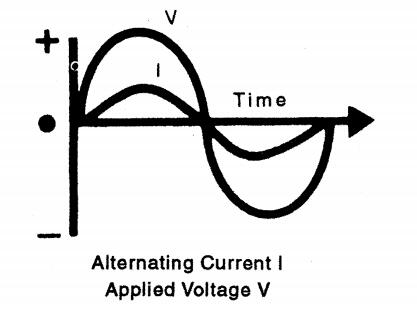
AMP - An abbreviation for the term Ampere.
Ampere - The unit of measure of electrical current flow. One ampere of current will flow when one volt of electrical potential is applied across one ohm of resistance.
Auto-Transformer - A transformer of single coil construction in which both the primary and secondary connections are made on the same coil but at different taps.
B- - Symbol used to designate the negative polarity of a D.C. voltage supply.
B+ - Symbol used to designate the positive polarity of a D.C. voltage supply.
Capacitance - The property of a device which resists changes in voltage. In an A.C. circuit, a capacitive load wilt cause the voltage to lag behind the current flow. Stated more conventionally, the current leads the applied voltage. A capacitive load is therefore a leading power factor load (see Power Factor).
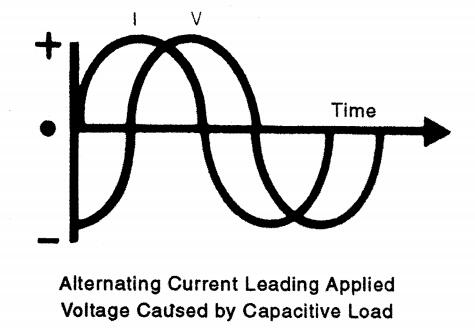
Capacitor - A device possessing the property of capacitance. A typical capacitor consists of two conducting surfaces separated by an insulating material. capacitor stores electrical energy, blocks the flow D.C. and permits the flow of A.C. to a degree largely dependent on the capacitance and the frequency of the applied A.C.
Circuit - An electrical path through which an electric current may flow from a voltage supply to a load and return. A closed or complete circuit is one where current is flowing. An open circuit is one where the path has been disrupted, such as an open switch or circuit breaker, thus stopping current flow.
Circuit Breaker - A protective device for opening a circuit when current flow exceeds a predetermined value.
Circulating Current - Also called Cross Current. Current which flows between paralleled generators, most apparent with no external load on the paralleled generators. Circulating current is caused (1) by unequal excitation of the generators (reactive current, which may be reduced by changing the voltage regulator adjustment or connections); and (2) by unequal power from the engines that are driving the generators real current (and power) which can be eliminated by governor adjustments.
Conductor - A wire, cable, bus, or other device intended to distribute current from the supply to the load. Technically, a conductor is any device which will permit the flow of current.
Contactor - A device for opening and closing an electric circuit. Contactors are normally used in motor circuits where large amounts of current are controlled.
Cross Current - See Circulating Current.
Cross Current Compensation - A term, no longer approved, for a circuit arrangement that made paralleled generators share the reactive component of load current in proportion to the generator ratings. The circuit arrangement could also essentially eliminate the reactive component of circulating current flowing between paralleled generators. See Reactive Differential Cross Current) Compensation And Reactive Droop Compensation.
Current--(Electrical, Symbol I) - The rate of transfer of electricity from one point to another. Current is usually a movement of electrons, but may also be a movement of positive ions, negative ions or holes. Current is usually measured in amperes.
Cycle - A complete set of events before repetition occurs. In alternating current or voltage, a cycle starts at zero, continues to a maximum positive value returns to zero, continues to a maximum negative value, and is completed at zero.
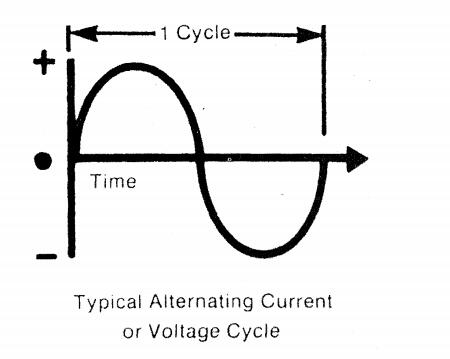
D.C. - See Direct Current.
Diode - A two terminal solid-state device which permits current to flow in one direction, but not in the other. In alternating current circuits, a diode will permit one half cycle to flow but will resist the flow of the opposite half cycle of current. Thus, alternating current is converted to direct current by a diode.
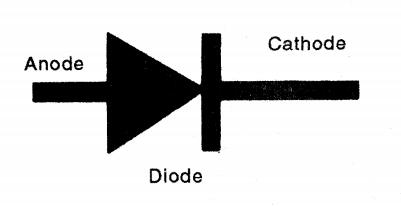
Direct Current-(Abbreviated dc) - An electric current that flows in one direction only. Conventional direct current is defined as flowing from positive to negative in the circuit outside the source (example: a battery or combination of diodes). Conventional current flows in the direction of the arrow through a diode. Electron flow and U.S. Navy designated current flow in the opposite direction.
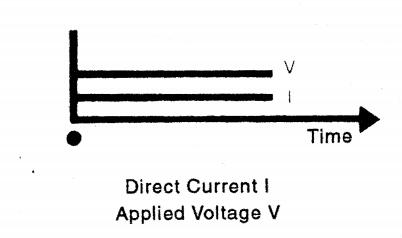
Distribution Panel - A control panel containing circuit breakers, transfer switches, and other control devices which distribute the electrical power, such as from a generator set to the various loads.
Double Pole Switch - A switch which has two sets of contacts which operate on two independent circuits at the same time.
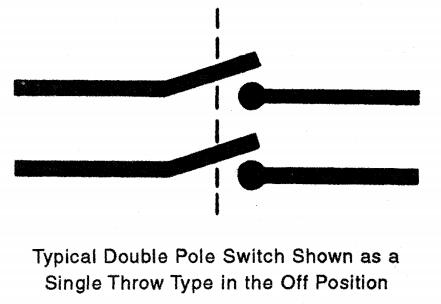
Double Throw Switch - A switch which has a common pole that is closed to one contact and open to a second contact in one switch position. With switch operation, the first contact opens and the second contact closes to the common pole.
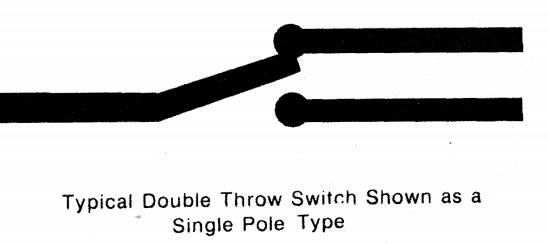
E - Symbol used to represent electrical potential (voltage).
Earth Ground - An intentional connection made between the earth and the metallic frame of electrical equipment as a means to eliminate possible voltage hazards to personnel. Earth Ground also serves, in some cases, to reduce electrical interference in sensitive circuits such as television and radio equipment.
EFC Governor, Electric Fuel Control Governor - An isochronous (same speed no load and full load) or speed droop governor that consists of a magnetic pickup, a governor control, and an actuator. The actuator may be normally closed or normally open. The actuator is mounted within the fuel pump housing.
EMI - An abbreviation for the term electro-magnetic interference which is sometimes caused by SCR type devices and evident in radio and television operation.
Energy - The capability of performing work.
Frequency - The number of complete cycles of alternating current per unit of time. Typically, frequency is expressed in cycles as per second or Hertz (HZ).
Frequency Droop - A decrease in steady-state frequency output of a generator caused by an increase in load. This decrease in frequency from the no load frequency is expressed as a percentage of the full load frequency or:

A three percent frequency droop may be used to provide governor stability and for load sharing between paralleled generator sets.
Frequency Meter - An instrument designed to measure the frequency of an alternating current system.
Gain -The increase in signal power that is produced by an amplifier, usually given as the ratio of output to input voltage, current or power. In generator set systems, a low gain setting on the electric governor of voltage regulator provides a relatively Small signal to correct variations of frequency or voltage. The frequency and/or voltage may wander or be slow in recovering to stable conditions after a load change. A high gain setting provides a relatively large signal to correct variations of frequency and/or voltage. If the gain is set too high, the electric governor or voltage regulator may over correct. This may produce unacceptable hunting of the frequency and/or voltage.
Gate - The third terminal of an SCR to which a voltage must be applied before the SCR will conduct.
Governor - A device which contorts engine speed and thus the generator output frequency.
Ground - A connection, either accidental or intentional, between an electrical potential and the earth or some conducting body serving in place of the earth.
Heat Sink - A device which absorbs heat from electrical devices such as diodes and SCR's and dissipates the heat to the surrounding air.
Hertz - A term equivalent to cycles per second (See Frequency).
Hunting - Oscillation in frequency or in voltage who steady-state conditions are not reached, particularly after a load transient change.
I - Symbol used to represent current.
Impedance - The opposition to the flow of alternating current.
Induced Voltage - The voltage which is produced relative motion between a wire and a magnetic field.
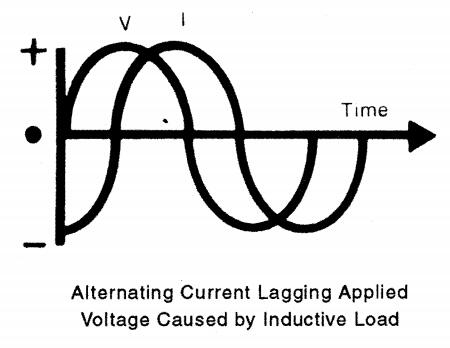
Inductance - The property of a device which resists changes in current. In an A.C. circuit, an inductive load will cause the current lag behind the applied voltage Stated more conventionally, the current lags the applied voltage. An inductive load is therefore a lagging power factor load. See Power Factor.
Inductor - A device possessing the property of inductance. An inductor stores electrical energy, passes DC and opposes the flow of AC to a degree largely depend on the inductance and the frequency of the applied AC. A typical inductor consists of a coil of wire.
In Phase - Alternating currents or voltages are in phase with respect to each other if they cross through zero and reach their positive and negative maximum values together.
Insulation - A non-conductive material such as rubber or plastic intended to prevent current from flowing. Technically, insulation is any material which stops the flow of current.
lsochronous - As it applies to engine governors, maintaining constant steady-state speed regardless of the within the rating of the engine. Thus, a power generator is said to be isochronous if the frequency remains the same regardless of load.
Copyright © Guangxi Dingbo Generator Set Manufacturing Co., Ltd. All Rights Reserved | Sitemap
Update cookies preferences